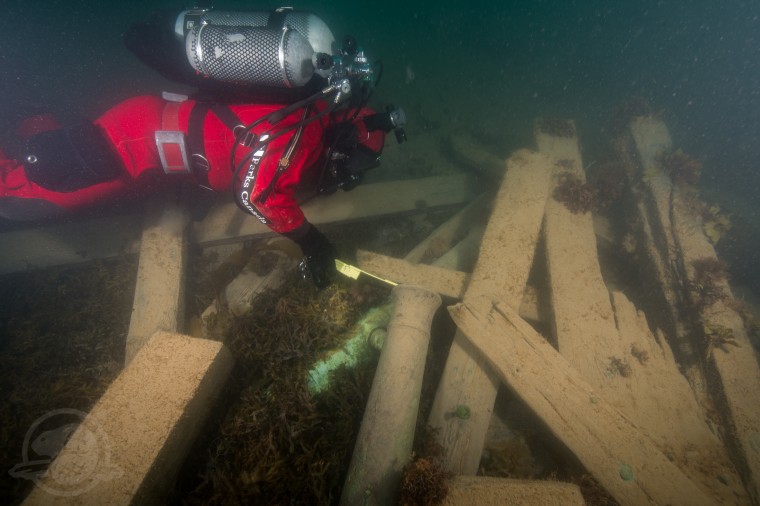Buttons. Plates. A medicine bottle filled with viscous goo. These are among the last remnants of the doomed Franklin expedition, an 1845 journey to the Arctic that ended with two ships sunk and 129 lives lost.
These artifacts saw new light last month in a flash exhibition at the Canadian Museum of History. They were brought to the surface during an April dive to the wreck site of the HMS Erebus, one of two ships that carried Sir John Franklin and his men to the Arctic in search of a Northwest Passage. Until the rediscovery of the HMS Erebus in 2014, no one knew where that ship had come to rest. The Erebus' sister ship, the HMS Terror, remains missing.
Fifteen artifacts have now been pulled from the wreck site, located in Queen Maud Gulf between Victoria Island and mainland Canada. In April, underwater archaeologists had to bore through 6.5 feet (2 meters) of sea ice to dive to the Erebus remains. [See Photos of Shipwreck and Newfound Artifacts from Franklin Expedition]
"It's an extremely remote location," underwater archaeologist Ryan Harris of Parks Canada, the chief archaeologist on the dive, told LiveScience.
Harris and his team had the advantage of support from Canada's Department of National Defense, the Royal Canadian Navy and even the New York Air National Guard to move equipment up to an ice encampment at Queen Maud Gulf.
In 1845, Franklin was working under far more constraints. The British Royal Navy officer left England in search of a passage through the Arctic icepack. His two ships became trapped in ice near King William Island in 1846 and were never heard from again. According to a note later found on King William Island, Franklin died there on June 11, 1847.

Search parties began scouring the Arctic for signs of Franklin and his 128 men as early as 1848. All they found were a few graves on King William Island and nearby Beechey Island. Modern research revealed cut marks on the remains that were unearthed, suggesting that Franklin's men resorted to cannibalism at the end. [Tales of the 9 Craziest Ocean Voyages]
Since the discovery of the HMS Erebus in 2014, Harris and his colleagues have only scratched the surface of the wreck and the artifacts inside.
During last September's initial dives, the team recovered the ship's bronze bell. In April, the archaeology team began testing laser-scanning technologies to catalog the wreck site. They also pulled up a few artifacts, including three ceramic plates and several pieces of the ship's rigging. The largest artifact recovered was a 680-pound (309-kilogram) cannon.
Related: Bronze Bell Recovered From Erebus Shipwreck
A few personal effects, like a patent medicine bottle and several tunic buttons, are a haunting reminder of the men who lost their lives on the expedition.
The Canadian Museum of History exhibit of the artifacts lasted from May 14 to 18, but history buffs can visit the Parks Canada website to tour the virtual exhibit, including video from the dive and photographs of the artifacts recovered.
This is a condensed version of a report from LiveScience. Read the full report. Follow Stephanie Pappas on Twitter and Google+. Follow LiveScience on Twitter, Facebook and Google+.

